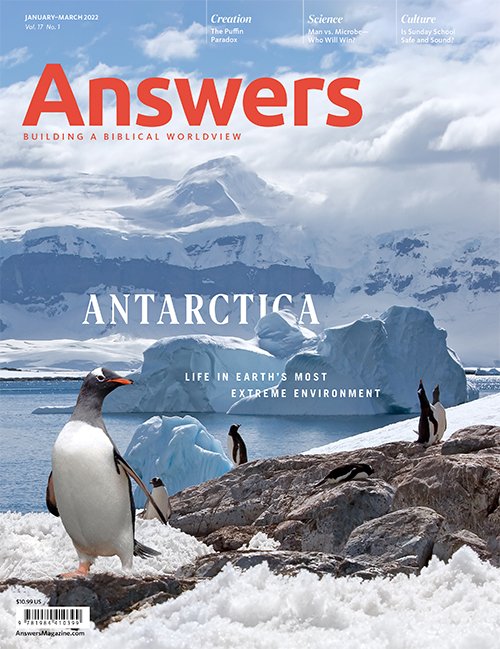Antarctica: Life on the Ice
God created the world to be inhabited, right down to the frozen continent—Antarctica.
As he crossed Antarctica in 1912, Robert Scott, the second man to reach the South Pole, lamented in his diary, “This is an awful place!” As if to confirm his assessment, the brutal Antarctic conditions later claimed the lives of Scott and his crew.
Early Antarctic explorers like Robert Scott likely never imagined the growing number of tourists who now cruise to the treacherous continent at the bottom of the world to catch glimpses of penguins, whales, and icebergs. Long after the legacy of these intrepid explorers, interest continues to surround this land of mystery.
About 4,000 people inhabit Antarctica at different times of the year. Many of these part-time residents are scientists and researchers from varying disciplines, converging at various stations across the continent to study in the world’s ultimate natural laboratory. Astronomers observe night skies free of light pollution. Oceanographers chart the currents. Climatologists examine the ice, looking for answers about the past. Geologists study the rocks and mountain ranges above and below the ice.
But some scientists are searching for the last thing you’d expect to find in one of the most inhospitable places on earth: life.
Since nearly the beginning of Antarctic exploration, scientists knew that this frozen continent once harbored life. When scientists discovered Robert Scott’s frozen party, they found the first Antarctic plant fossil among their possessions. This relic told the story of a much different—less frigid—time in history when plant and animal life flourished on the continent.
Particularly within the last few decades, scientists have discovered not only more evidence that dinosaurs and plants lived on the continent thousands of years ago, but also a growing list of creatures who call Antarctica home today. Isaiah 45:18 exclaims that the earth was created to be inhabited. Antarctica is clear evidence that God’s creation has spread out to proclaim his glory, even in the most extreme environment in the world.
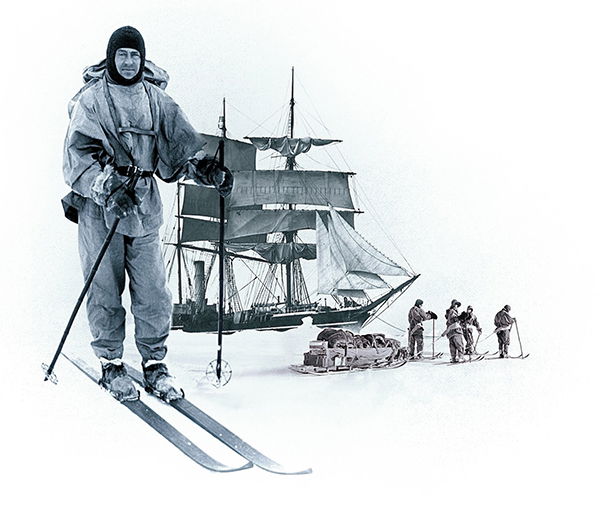
British explorer Robert Scott and his crew set sail from Cardiff, Wales, in 1910, bound for Antarctica on their ship the Terra Nova.
How Did Antarctica Get Down There?
Antarctica is a place that seems out of place. Though we don’t know much about what the original created foundation of this continent looked like, we know that it was part of the pre-flood supercontinent, that it was always near the bottom of the world, and that the catastrophic global flood of Noah’s day added fossil-bearing layers on it (Genesis 8). When the fountains of the deep burst open, the upheaval ruptured the tectonic plates, breaking up what had been one landmass into separate continents. The major tectonic shifting then moved the continents and islands to their current locations.
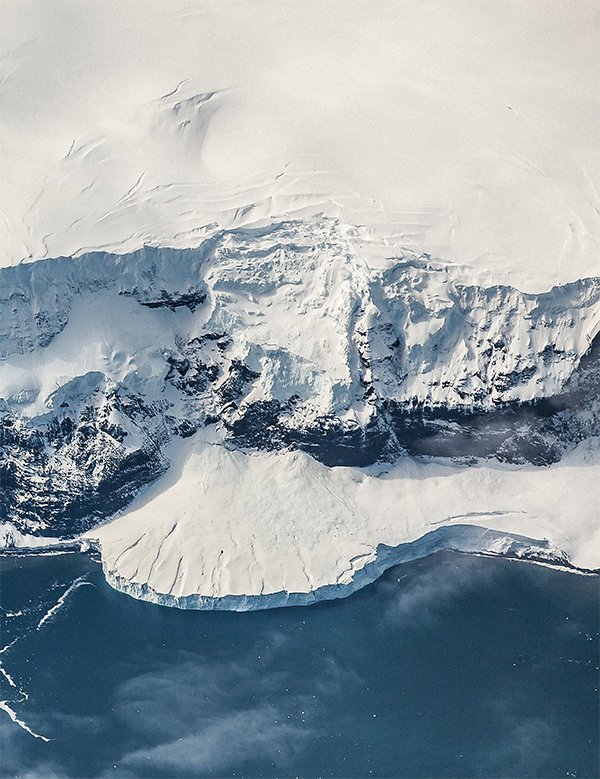
Evolutionists have drafted a different story about Antarctica’s past. Based on their discoveries of fossilized tree stumps, coal beds, and leaf mats, they believe that Antarctica was covered by lush forests some 260 million years ago. After Antarctica broke away from South America 35 million years ago, they say, the climate began changing, gaining ice sheets which have accumulated over millions of years. Earth’s cooling climate put environmental stresses on the forests until they eventually went extinct.
However, according to creationists, the tree stumps and leaf mats found in Antarctica don’t represent forests that grew on the continent, but were carried by the global floodwaters from elsewhere and laid down in sediments on Antarctica. After the massive volcanic activity during the catastrophic flood, the oceans were warmer and the air temperatures were cooler. These post-flood conditions instigated colder temperatures, which covered about one third of the earth’s surface in ice sheets and glaciers. This ice age lasted for several hundred years.
Now Antarctica’s ice layers stay frozen thanks to their location in polar latitudes, which receive no direct sunlight. Even in the summer, the sun remains low on the horizon. Like a drink koozie, the oceans surround and insulate the continent that sits at an average elevation of 7,500 feet due to mountain ranges and thick layers of ice.
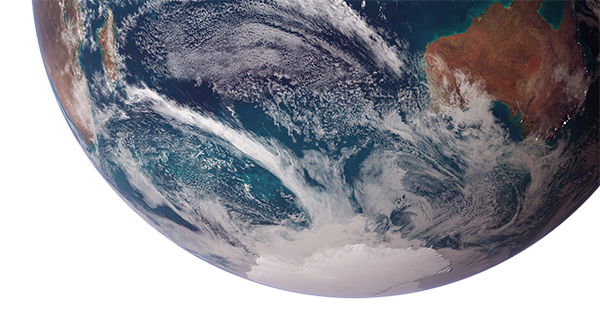
Photo NASA/GODDARD SPACE FLIGHT CENTER/RETO STÖCKLI
Continent of Extremes
Antarctica is the driest, coldest, windiest, brightest, highest place on earth—not exactly the stuff of travel brochures. For half of the year, the summer sun shines continuously. Though the sun hangs low on the horizon, its reflection on the ice and snow are too bright to view comfortably. Then in the polar winter, darkness engulfs the continent for another six months.
Winter temperatures on the coast hover around 14ºF while temperatures in the interior regions regularly plummet to -76ºF. In 2010, satellites recorded Antarctica’s temperature at -135.8 Fº—the coldest temperature ever recorded on earth.
Wind gusts can last for days at 50 mph and reach over 100 mph. Though snow and ice build up throughout the year, Antarctica receives an average of less than two inches of rain annually, surpassing the Sahara as the world’s largest desert—the size of the United States and Mexico combined.
Antarctica is a massive continent with several large and small islands. Ninety-nine percent of the continent is coated in ice and snow, up to three miles thick in some places. Above and beneath the layers of snow and ice are jagged mountain ranges and plunging canyons. The coast is lined with ice shelves, some larger than the British Isles. In fact, if Antarctica thawed, scientists estimate the melted ice would raise ocean levels by 200 feet.
In such a severe environment, how could anything survive?

Life on Ice
As you might expect, most of Antarctica features no trees or shrubbery or lush grass—just a vast, blinding sheet of ice and snow. Though most of the continent is white, on the northern coastline and several of the large islands you can find green vegetation. During the summer months on the South Orkney Islands, the South Shetland Islands, and the western Antarctic Peninsula, 100 species of mosses and 30 species of liverwort bloom mostly in the rocks of the intertidal areas.
The largest of Antarctica’s native vegetation are two species of flowering plants, Antarctic hair grass and Antarctic pearlwort. But how do these plants pollinate without pollinators? To scatter their pollen, the plants use one of Antarctica’s most abundant exports—wind.
On Land
Africa is home to over 1,000 species of mammals. Asia hosts 500 species. But to see Antarctica’s resident land animals, one scientist said, “You have to have a microscope.”1
Antarctica has no land mammals, reptiles, or amphibians. In fact, the largest land animal—and the only endemic insect—is the wingless midge, an invertebrate only half an inch (1.3 cm) long. This creature spends nine months each year frozen solid.
In the warmer regions of Antarctica’s islands, worms, beetles, tardigrades, mites, and springtails thrive in the mosses.
In the Water and Air
Contrasting the lack of land fauna, the waters surrounding Antarctica teem with some of the most diverse creatures in the world. The dense waters around the continent press against the bottom of the ocean and cause the warmer water to upwell, bringing with it nutrients that allow algae and plankton to flourish.
Tiny krill abound. Some scientists estimate that the total population of Antarctic krill weighs more than all humans on earth. These abundant crustaceans provide food for fish, seabirds, and mammals, including the largest mammals of all—whales. In the summer months, humpback whales, sperm whales, minke whales, blue whales, and others migrate to the icy waters to feast on the krill buffet, with adults gulping down over four tons of krill a day.
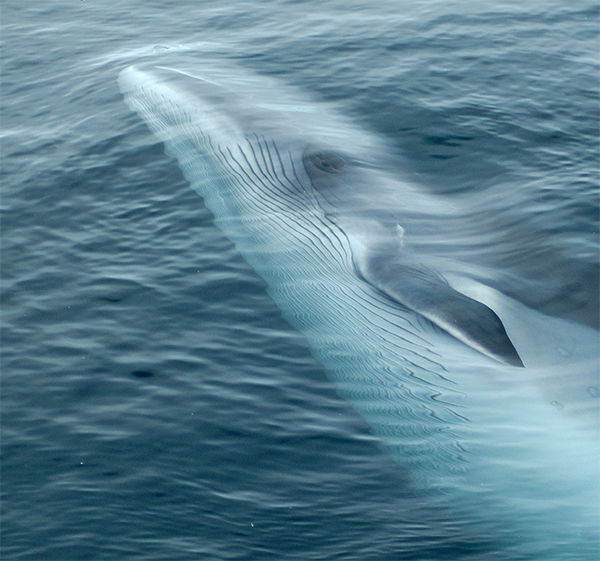
Feeding on crustaceans, plankton, and small fish, Antarctic Minke whales glide through the waters of the Southern Ocean.
Several species of penguin, including the familiar tuxedoed emperor penguin, soar through the water for food and huddle on the icy shores for warmth. Orcas patrol the waters as the top predator, and six different species of blubbery seals plow through the seas. Joining them are a host of other creatures such as sponges, sea spiders, mollusks, and salps (a gelatinous, clear creature that resembles a jellyfish). The fish in these waters are equipped with antifreeze to keep their blood from freezing.
On the islands, birds such as sheathbills, petrels, Antarctic terns, several species of albatross, sandpipers, and gulls make their nests. But even the birds are fair-weather natives, flying for warmer climates when the temperatures drop.

Adélie penguins and leopard seals congregate on ice flows in eastern Antarctica.
Why All the Interest?
For evolutionary scientists, the preoccupation with life in Antarctica is really an interest in the possibility of life in an even more hostile terrain: outer space.
Scientists think their discoveries might explain how microbes or other supposedly low-level life forms could subsist in icy environments like Jupiter’s moon Europa, where they believe oceans exist beneath ice. After all, if evolution found a way to equip life to form in the far-flung frozen reaches of Antarctica, it is conceivable that it should have found a way to evolve in other extreme locations in space. A finding like this, they think, could help solve mysteries surrounding what they believe to be our own evolutionary beginnings.
We have many scientific and biblical reasons to doubt the possibility of life elsewhere in the universe. But if someday we do discover microbes or signs of life on a planet or moon, creationists need not be taken off guard. We can be sure it was created by God.
Bacteria
Some biologists are most interested in Antarctica’s smallest life forms. A host of diverse bacteria survive with low-nutrient soil, little water, and no sunlight for months out of the year. One hardy bacteria thrives by grabbing hydrogen, carbon monoxide, and carbon dioxide from the air.
Researchers have found microbes thriving in a subglacial lake 2,625 feet under ice. In 2020, scientists discovered how microbes live in these lakes without sunlight. As bedrock erodes, the crushed sediment releases gases trapped inside. One group of microbes feed on methane to survive. Another microbe in the lake converts ammonium into nitrite for energy.
Life Below
Minimal water, periods of constant darkness, below-freezing temperature, and ultraviolet radiation from the snow’s reflection make the interior continent highly hostile to life. When scientists took soil samples in the inner continent of Antarctica, they discovered something found nowhere else in the world—nothing. When scientists cored out a sample of ice from a mountain in the middle of Antarctica, they found no microbial life at all. To their knowledge, this is the first instance of finding soil that doesn’t seem to support any sort of microbial life. Life has existed in torrid hot springs, acidic lakes, the frozen tundra, nuclear sites, and other brutal environments, but it can’t survive in the most rigorous parts of Antarctica.
Still, life has shown up to surprise scientists in other seemingly unviable areas. In early 2021, a team was drilling through the ice for sediment from the ocean floor. Into the hole, they lowered a camera, which hit a rock and fell into the sediment. After righting itself, the camera caught a brief scan of the rock. The shocking footage captured a sort of film clinging to the rocks—a layer of bacteria called a microbial mat—and hanging from the stone were sponges and other filter feeders.
These creatures were 160 miles from the nearest open water and over 1,600 feet beneath the ice, far away from sunlight and known currents that would bring food drifting along for the stationary creatures to snag. “It’s a place where, essentially, we didn’t expect this kind of community to live at all,” said Huw Griffiths, a marine biogeographer. “This is showing us that life is more resilient, and more robust, than we ever could have expected, if it can put up with these conditions.”2

Some sea creatures can live right at the edge of the Antarctic ice.
Wandering to Wonder
Evolutionists wonder at each new species and the evidence of life that they find hidden like treasures in the snow and ice. Creationists have a different reason to wonder. Life in Antarctica doesn’t exist by random chance survival. In his wisdom, God gave creatures and humans the DNA to adapt to different environments even in the tumultuous and severe environments left in the wake of the flood of judgment.
The wonder of God’s creation does not necessitate our discovery of it. God created this world for his own glory. But our Creator is pleased when we exercise dominion by expanding our knowledge and discovery of the planet that he gave us to steward. Being flabbergasted by each new find can be a form of worship as we accept our limits of understanding and acknowledge God’s incredible design and care for this earth.
God knows the galaxies beyond our farthest view and every microorganism that dwells in the deepest undiscovered Antarctic lake. He formed them, sees them, and provides for their existence—and for us—on this life-filled planet.
Antarctica’s Global Role
The frozen continent plays an important role in moderating our planet’s temperatures.
The world’s atmospheric pressure, humidity, air temperatures, and wind patterns are moderated thanks to processes in the Southern Ocean, which surrounds Antarctica. The Southern Ocean, newly recognized as the world’s fifth ocean, connects all other oceans. Cold Antarctic waters, known as Antarctic Bottom Water, form in the regions of Antarctica’s continental shelf. Due to their salinity and frigidity, these waters drive the global ocean circulation; feed oxygen, carbon, and nutrients to earth’s other oceans; and help control the climate by transporting heat.
Additionally, Antarctica stores 90% of earth’s ice. The ice reflects some of the sun’s rays to help keep temperatures on earth bearable.
Answers Magazine
January–March 2022
God created the world to be inhabited, right down to the frozen continent at the bottom of the globe.
Browse IssueFootnotes
- Andrea Mustain, “Weird Wildlife: The Real Animals of Antarctica,” Live Science, December 21, 2011, https://www.livescience.com/30991-weird-wildlife-real-animals-antarctica-penguins.html.
- Nicoletta Lanese, “Hidden world of Bizarre Creatures Discovered Deep Beneath Antarctic Ice,” Live Science, February 15, 2021, https://www.livescience.com/unknown-animals-under-antarctic-ice.html.
Recommended Resources

Answers in Genesis is an apologetics ministry, dedicated to helping Christians defend their faith and proclaim the good news of Jesus Christ.
- Customer Service 800.778.3390
- Available Monday–Friday | 9 AM–5 PM ET
- © 2025 Answers in Genesis



